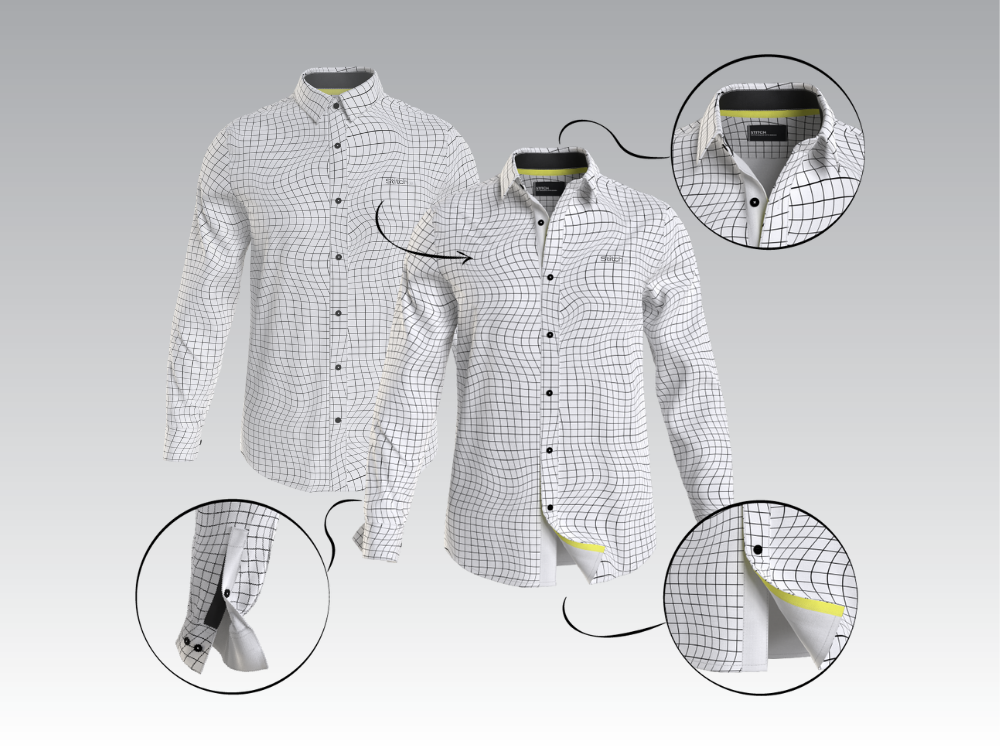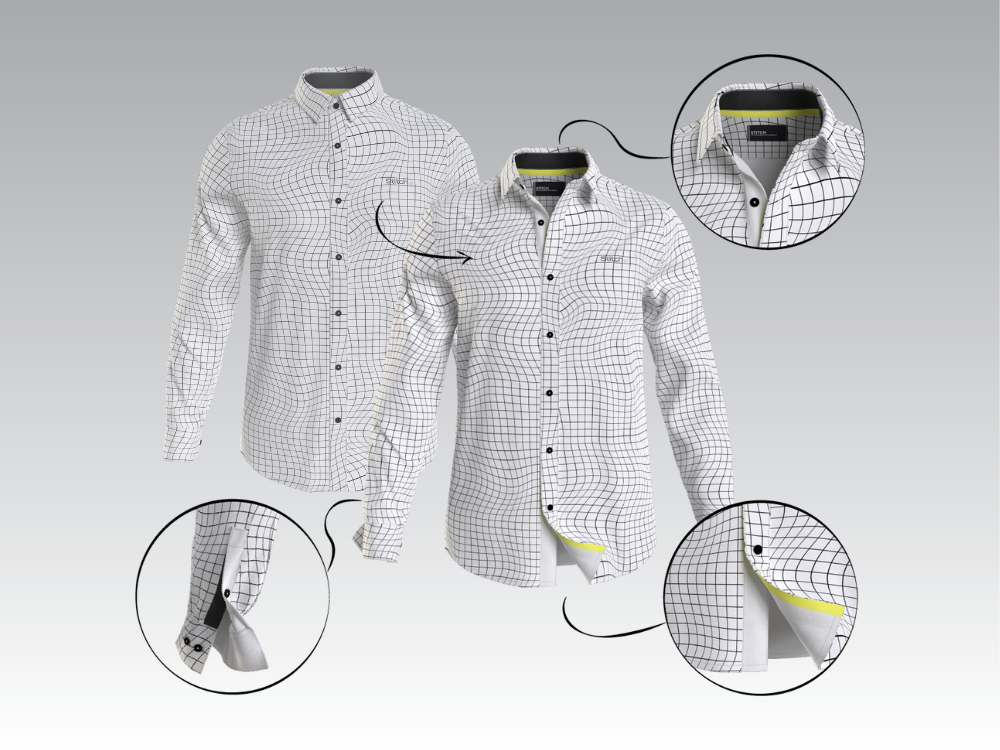By Álvaro Pin
The tools to bring product creation and sales teams together.
Convincing sales teams on using 3D samples can be a tough challenge for product creation teams. First, you need to bring them along with your process so 3D becomes part of their radar and you need to understand how they work so your 3D samples serve their purpose. There are multiple ways you can improve your collaboration with sales and during this process, you’ll need different tools to set the right expectations, increase alignment between teams, and progress towards a common goal. These are 7 tools to convince sales to use 3D samples:
3D Style Guide
A 3D style guide is a document outlining how to style a 3D garment. Unlike a standards document, which specifies the quality of a 3D file, the 3D style guide sets expectations on how the branding of the company translates into a 3D garment. 3D Style Guides can be very different depending on the product category. For example, a hoodie - you need a guide which answers the following questions in your brand:
- Do you want the hood up or down?
- Should it be fully zipped up, fully unzipped, or somewhere in between? If it’s in between, then give exact measurements (e.g. zip should be unzipped 5cm from the top). If it’s fully unzipped, how wide should the gap at the front be?
- How long should the drawcords be? Do you want the drawcords sitting very neat and straight, or do you want a more natural feeling and some movement/asymmetry? Should the drawcords be tied together or knotted in some way?
- Should the sleeve cuffs be pulled down, and lying very straight without any creases? Or do you want them sitting naturally on the wrist, which will probably result in some creases on the arm? Maybe you want the sleeves pushed up to the elbows?
There are countless more details which can be addressed per product group in a styling guide but I think you get the point. You basically look at every tiny detail and document exactly how you want it. How can your designers/3d artists/vendors know unless you tell them? It may seem obvious to you that you want the hood up, but people aren’t mind readers - maybe they assume you want the hood down. Be clear about every detail which is important to you. The more specific, the better. A good 3D style Guides can be a huge time saver in the 3D sample process.
3D Style guides can be a great tool to onboard sales in 3D when you co-create them with them. This will help you align expectations while involving them in the product creation process so they understand what 3D can do while you learn from what’s important for them in a 3D Sample.

3D Rollout Plan
A 3D Rollout Plan is a timeline that includes strategic milestones (new categories samples in 3D) and tactical milestones (when 3D samples are available in a calendar) around 3D Samples. To make the most of this tool it is important to display current and ideal timelines, so both strategic and tactical milestones can be based on this.
Similar to the 3D Style Guide, a Rollout Plan can be helpful when created in collaboration with sales. It helps align expectations and deliverables with sales teams and makes 3D a reality.
3D Workshop
A good workshop around 3D teaches about the workflow and tools it takes, as well as the change it represents versus a conventional design process. The Product in a Day workshop by our Stitch Academy team for example, enables teams to create a product from conception to fabrication using 3D tools.
Workshops like this are a great way to raise awareness around 3D in the sales community. The combination of educational content and interactive activities helps sales (and also other non-product creation teams) learn about it in a context where the change to their process comes from.
Blind Test
3D Blind Tests are exercises where product creation teams assess the quality of a 3D Sample without letting the test audience know they are seeing a render. These exercises can be useful both internally and externally, but they must be done in either a controlled environment or with a controlled scope.
Blind tests can be powerful tools to remove preconceived biases on the needs and requirements in a 3D sample. If you ask someone to spot the differences between 2 elements they will find them, even when both elements are the same. These tests can be done individually, but are most useful in groups, so everyone can see the difference in response from their team members.
Faceless Avatars
Faceless avatars are virtual mannequins with a human-like body shape but without any human face traits or expressions. Avatars are useful to build outfits using 3D samples and they are commonly created via scanning models or using existing mannequins.
Faceless avatars can help sales and customers put focus on the product and not on the quality of the avatar. Trying to replicate human expressions is time-consuming and pretty hard to achieve, even for seasoned 3D specialists. You want the 3D sample to be the center of the conversation, not the face of the avatar.

Detail Renders
Detail renders are zoomed-in snapshots of a 3D sample that highlight a particular element of the product such as texture, fabrication, or branding amongst others. These shots are a great resource to convey a physical characteristic in a digital format.
These shots are useful because they help sales “feel” how the product is, even when they can’t actually touch it. When the detail shots are agreed upon with with sales beforehand, these help sales highlight the most important features of a product without having to remember all product qualities for the entire collection. Win-win.
3D Viewer
This is arguably the go-to response when companies implement 3D. 3D viewers are frames that enable users to interact with a 3D Sample by rotating, zooming in and out, and generally giving the feel of touch to users while still using a digital file. VNTANA, SketchFab, and Emersya are some of the most common products in the fashion market today.
A 3D viewer is useful for sales as it adds another touchpoint to sell a product digitally. This is especially useful for high-priority products, such as key styles (marketing looks) or more complex categories (outerwear, accessories...). 3D viewer’s key selling point is interactivity and in that regard, it can give sales and buyers the feel of touch that render or image may not give. However, 3D viewers usually require smaller file sizes so you should not use them as a replacement for a hi-res 3D render. In addition, for simpler categories or products, a 3D viewer may not add much to the sales discussion.
